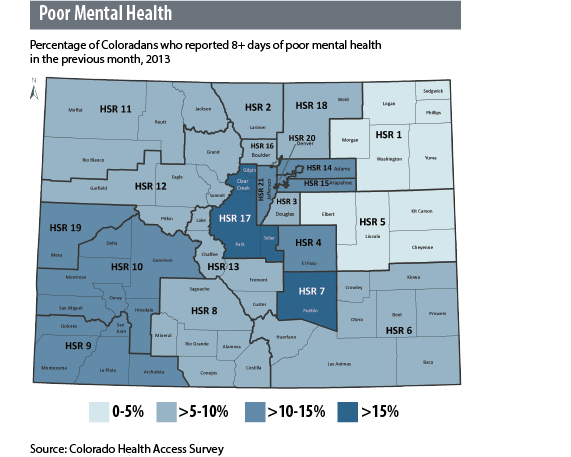Rising suicide rates and mass shootings have elevated mental health as a priority in Colorado, placing it among Colorado’s 10 Winnable Battles. So, for the first time, the Colorado Health Access Survey (CHAS) included questions pertaining to mental health and access to mental health care.
The CHAS found that one of four Coloradans had at least one or more days of poor mental health – defined as stress, depression or emotional problems – in the month before the survey.
Cost was the top reason given for not getting needed mental health services. More than three of four Coloradans who didn’t seek needed mental health services said they were concerned that they couldn’t afford it. More than half of Coloradans who didn’t seek needed mental health care said they were unsure if health insurance covered visits to a mental health provider.
More than 15 percent of the residents of Pueblo County (Health Statistics Region 7) and the mountain counties of Gilpin, Park, Clear Creek and Teller (Health Statistics Region 17) reported eight or more days of poor mental health. (See accompanying map.) They were the two regions of the state with the highest prevalence of poor mental health.
Regions with between 10 percent and 15 percent of residents reporting poor mental health were clustered in two areas of the state: southwest and western Colorado plus the metro Denver area.
Northeast Colorado and the Eastern Plains had the lowest rates of poor mental health, below 5 percent.
The data might not tell a complete story. Health workers say people suffering from mental health problems often are unwilling to say so because of the stigma that surrounds their condition.
Colorado’s goal is to reduce the percentage of adults with depression from 7 percent to 5 percent by 2016.

